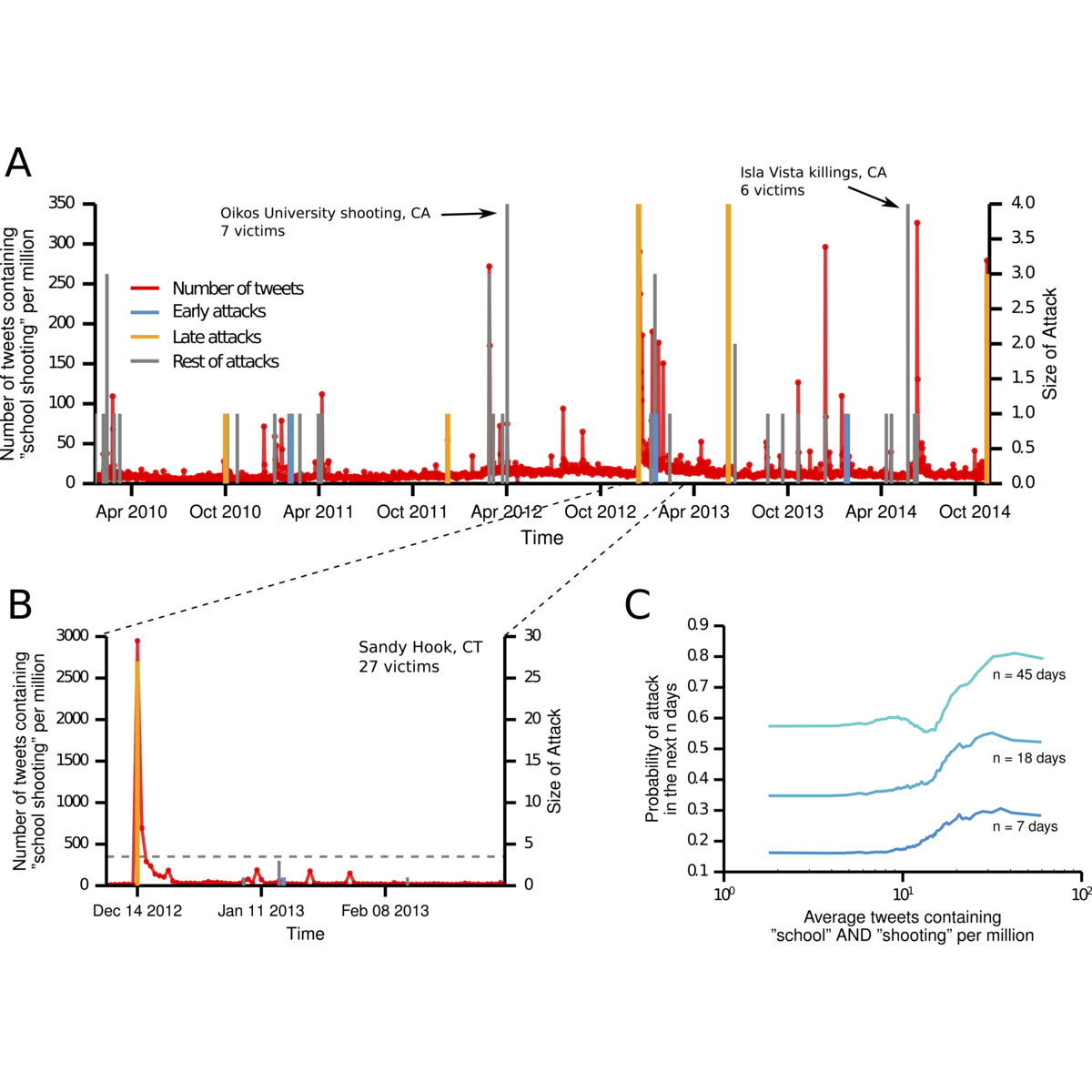Social media affects the timing, location, and severity of school shootings
J. Garcia-Bernardo, H. Qi, J. M. Shultz, A. M. Cohen, N. F. Johnson, and P. S. Dodds

Times cited: 21
Abstract:
Over the past two decades, school shootings within the United States have repeatedly devastated communities and shaken public opinion. Many of these attacks appear to be 'lone wolf' ones driven by specific individual motivations, and the identification of precursor signals and hence actionable policy measures would thus seem highly unlikely. Here, we take a system wide view and investigate the timing of school attacks and the dynamical feedback with social media. We identify a trend divergence in which college attacks have continued to accelerate over the last 25 years while those carried out on K-12 schools have slowed down. We establish the copycat effect in school shootings and uncover a statistical association between social media chatter and the probability of an attack in the following days. While hinting at causality, this relationship may also help mitigate the frequency and intensity of future attacks.
- This is the default HTML.
- You can replace it with your own.
- Include your own code without the HTML, Head, or Body tags.
BibTeX:
@unpublished{garcia-bernardo2015a,
author = {Garcia-Bernardo, Javier and Qi, Hong and Shultz, James M. and Cohen, Alyssa M. and Johnson, Neil F. and Dodds, Peter Sheridan},
title = {Social media affects the timing, location, and severity of school shootings},
year = {2015},
note = {Available online at \href{https://arxiv.org/abs/1506.06305}{https://arxiv.org/abs/1506.06305}},
key = {violence,prediction},
}